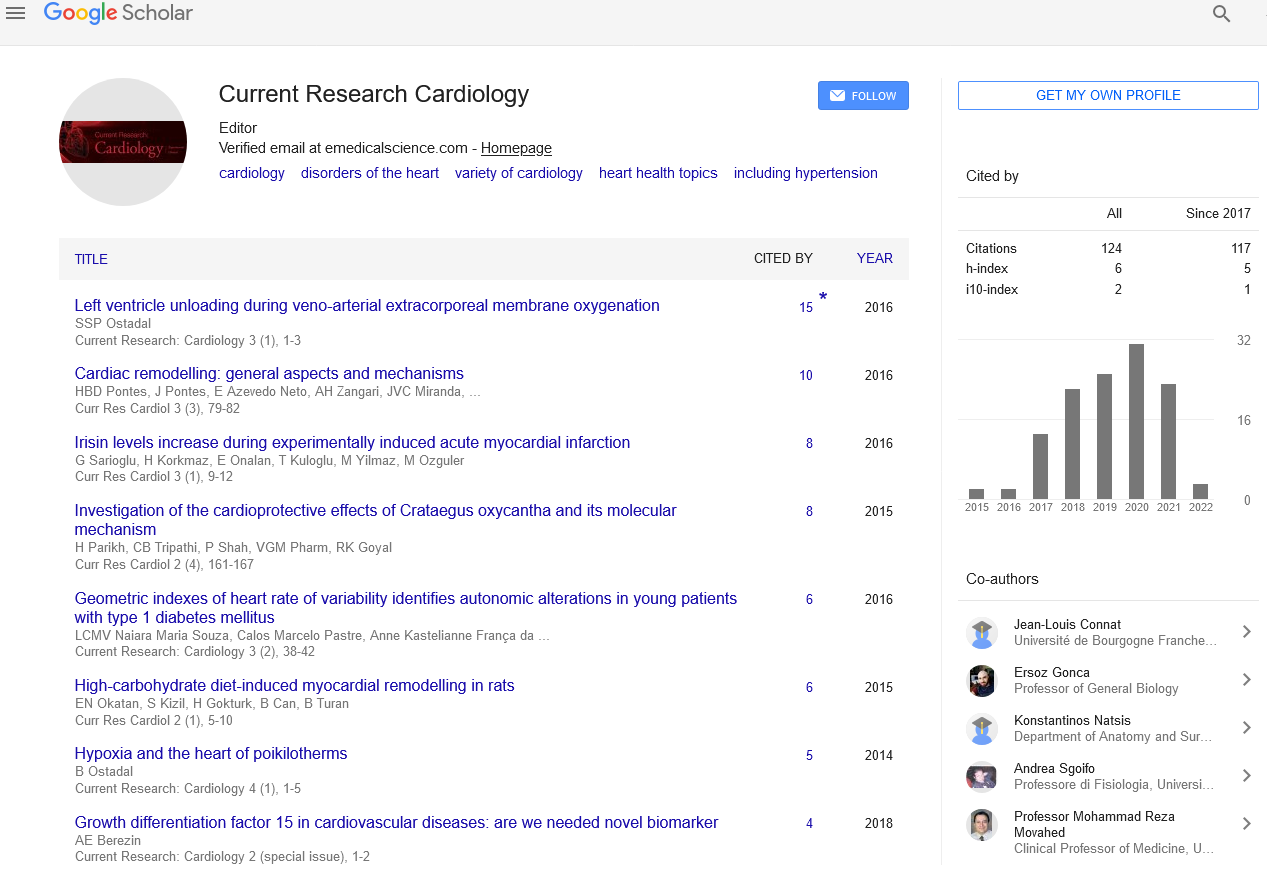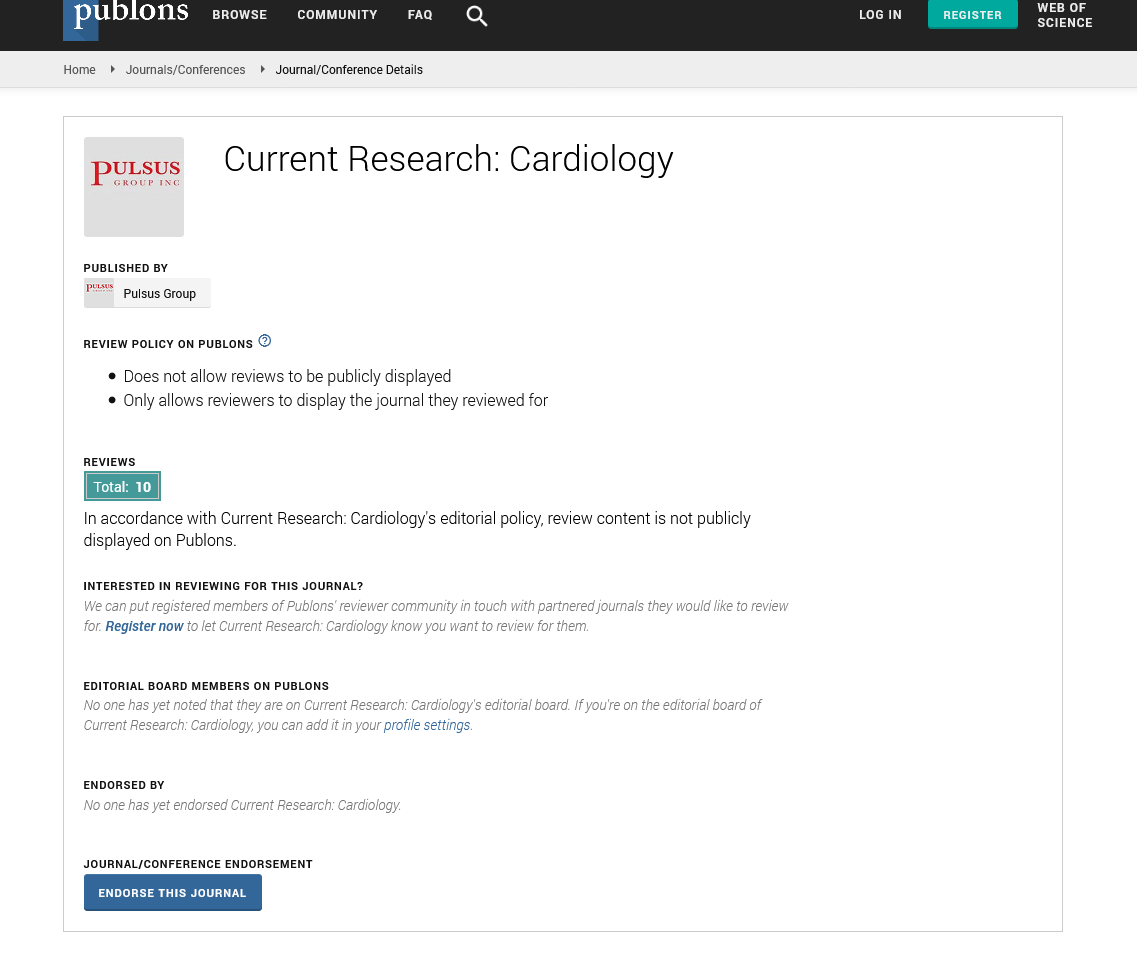The influence of red blood cells in circulation
Received: 01-Dec-2021 Accepted Date: Dec 15, 2021; Published: 22-Dec-2021
Citation: Salha A.The influence of red blood cells in circulation. Curr Res Cardiol. 2021;8(5):3.
This open-access article is distributed under the terms of the Creative Commons Attribution Non-Commercial License (CC BY-NC) (http://creativecommons.org/licenses/by-nc/4.0/), which permits reuse, distribution and reproduction of the article, provided that the original work is properly cited and the reuse is restricted to noncommercial purposes. For commercial reuse, contact reprints@pulsus.com
About the Study
Red blood cells are round, flat and dented in the center, like a donut without holes. Doctors can check the size, shape, and health of red blood cells with a blood test. Hemoglobin is a protein in red blood cells. It carries oxygen. Red blood cells also remove carbon dioxide from your body and carry it to your lungs for you to breathe.Red blood cells are made in the bone marrow.
They usually live about 120 days before dying. Red blood cells, also known as erythrocytes (humans or other animals that do not have a nucleus in red blood cells) are the most common types of blood cells and vertebrates. The primary means of delivering oxygen to body tissues via the bloodstream through the circulatory system.Red blood cells take up oxygen in the lungs lungs and gills of fish and supply oxygen to tissues as they pass through the capillaries of the body.
The cytoplasm of red blood cells is rich in hemoglobin, an iron-containing biomolecule that can bind oxygen and cause the redness of cells and blood. Each human red blood cell contains about 270 million of these hemoglobin molecules. The cell membrane is composed of proteins and lipids, and this structure provides essential properties for physiological cell function, such as deformability and stability as it crosses the circulatory system, especially the capillary network.
Red blood cells contain a protein called hemoglobin, which carries oxygen from the lungs to all parts of the body. Checking the number of red blood cells in the blood is usually part of a whole blood cell test. It can be used to check for symptoms such as anemia, dehydration, malnutrition and leukemia.
Foods rich in iron help maintain healthy red blood cells. Vitamins are also needed to make healthy red blood cells. These include vitamins B2, B12 and B3 found in foods such as eggs, whole grains and bananas. Folic acid also helps. In humans, mature red blood cells are flexible, oval, biconcave disks. They lack the nucleus and most organelles to provide maximum space for hemoglobin.
There can be a part of hemoglobin sac, which has the plasma membrane as a sac. In adults, about 2.4 million new red blood cells are produced every second. Cells develop in the bone marrow, circulate in the body for about 100120 days, and then their constituents are reused by macrophages. Each orbit lasts about 60 seconds.
About 84% of the cells of the human body are 2030 trillion red blood cells. Almost half (40% to 45%) of blood volume is red blood cells. The number of red blood cells and the amount of hemoglobin vary from person to person and under conditions.
This number is high, for example, for people living in the highlands and for erythrocytosis. At birth, the red blood cell count is high. It declines shortly after birth and gradually rises to higher levels during puberty.






